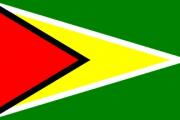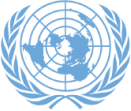On Wednesday February 16, Guyana’s Permanent Representative to the United Nations, Ambassador Carolyn Rodrigues-Birkett, co-hosted a Webinar for Permanent Representatives on the priority theme of thr 66th Session of the Commission on the Status of Women - “Achieving gender equality and the empowerment of all women and girls in the context of climate change, environmental and disaster risk reduction policies and programmes”. The other co-hosts were UN Women Executive Director Sima Sami Bahous and the Permanent Representatives of South Africa, Sweden and Kenya.
The highlight of the event was the presentation segment where experts from the host countries shared perspectives on how climate change is impacting women in their countries and how women are taking climate action.
Guyana’s Annette Arjoon-Martins painted a riveting picture of the effects of heavy rainfalls and flooding on women and girls in Guyana and how young women are emerging as environmental leaders and advocates. She provided snippets of innovative efforts in the hinterland communities including the ‘Girl Drone Brigade’, and how the marriage of indigenous and traditional knowledge with modern technology is allowing women to be agents of change. Ms Arjoon-Martins also spoke of the work of Guyana’s female marine scientists.
In her remarks, Ambassador Rodrigues-Birkett said -
“We are meeting at a time when women and girls are facing the brunt of the impacts of the dreadful 3 C’s - that of Conflict, Covid-19 and what we will discuss – Climate Change. In this context, the distance from gender equality seems far and almost unreachable. But if anything, it must motivate us to redouble our efforts. Allow me to make three points in this regard.
Firstly, as we are all aware, women and girls are more vulnerable to the impacts of climate change, mainly because they constitute the majority of the world’s poor. In many countries, this vulnerability is intensified as women are dependent on natural resources for their livelihood, which are threatened by climate change. For example, women constitute just under 45% of all workers in the agriculture sector – a sector that is natural resource intensive. A paradox indeed, that those who contribute in no small measure to feed the world are among the most impoverished. And so, eradicating poverty is central to heavily reducing women’s vulnerability to climate change and to other harms as well. Indeed, poverty eradication is the active ingredient for achieving gender equality.
Secondly, we must recognize that if we are to have a chance of winning the battle against climate change, we must ensure that the adaptation and mitigation solutions consider the specific needs of women by consulting with them and meeting them where they are.
All women are vulnerable to climate change but some are affected more. In many of our countries, when there is a flood and children cannot go to school it mainly falls on the woman to ensure they are safe, fed and schooled; when there is a drought it is the woman, for the most part, that must travel long distances to obtain water for domestic use; in cases where she is engaged in agriculture - and as said before more than 40% of agricultural workers are women - whether it is a flood or drought she loses. Sometimes her entire crop and the animals she rears. Let us not forget too that in several countries, the number of female single-parent headed households remains high, so the lone breadwinner is the woman. Already saddled with a disproportionate level of responsibility for her family, this is multiplied several times over in times of natural disasters.
I have outlined these situations, which are not hypothetical, to underscore the need for accelerating the provision of climate finance. Chief among these is the commitment of US$100 Billion by 2020 from developed to the developing countries. We are in 2022 and that commitment remains unmet. I use this opportunity to once again call on our developed partners to live up to their commitment, so that together we can make a real impact on those most vulnerable to climate change - women and girls.
My third and final point is, while it is a fact that women and girls are among the most vulnerable to climate change, let us not forget the other half of the equation, and that is, they are part of the solution. They have solutions. In many places they are the leaders advocating for the protection of the environment and are implementing home grown solutions. As such, the measures we seek to implement must materialize through consultation and full involvement of women and girls.
Later in the event, we will hear from Ms. Annette Arjoon-Martins of Guyana who will tell us about her work with women in Guyana, marrying indigenous and traditional knowledge with technology in the fight against climate change.
As I conclude, colleagues, let us ensure that the Outcome Document of the CSW takes into consideration the woman who wake every day to face the brunt of the impacts of climate change, on top of all the other issues she must confront, and that we ensure that the challenges she faces and the solutions she brings do not get bogged down in jargons, terminologies and “agreed language.” We owe this to her. We owe this to us.
of “Achieving gender equality and the empowerment of all women and girls in the context of climate change, environmental and disaster risk reduction policies and programmes”
We are meeting at a time when women and girls are facing the brunt of the impacts of the dreadful 3 C’s - that of Conflict, Covid-19 and what we will discuss – Climate Change. In this context, the distance from gender equality seems far and almost unreachable. But if anything, it must motivate us to redouble our efforts. Allow me to make three points in this regard.
Firstly, as we are all aware, women and girls are more vulnerable to the impacts of climate change, mainly because they constitute the majority of the world’s poor. In many countries, this vulnerability is intensified as women are dependent on natural resources for their livelihood, which are threatened by climate change. For example, women constitute just under 45% of all workers in the agriculture sector – a sector that is natural resource intensive. A paradox indeed, that those who contribute in no small measure to feed the world are among the most impoverished. And so, eradicating poverty is central to heavily reducing women’s vulnerability to climate change and to other harms as well. Indeed, poverty eradication is the active ingredient for achieving gender equality.
Secondly, we must recognize that if we are to have a chance of winning the battle against climate change, we must ensure that the adaptation and mitigation solutions consider the specific needs of women by consulting with them and meeting them where they are. All women are vulnerable to climate change but some are affected more. In many of our countries, when there is a flood and children cannot go to school it mainly falls on the woman to ensure they are safe, fed and schooled; when there is a drought it is the woman, for the most part, that must travel long distances to obtain water for domestic use; in cases where she is engaged in agriculture - and as said before more than 40% of agricultural workers are women - whether it is a flood or drought she loses. Sometimes her entire crop and the animals she rears. Let us not forget too that in several countries, the number of female single-parent headed households remains high, so the lone breadwinner is the woman. Already saddled with a disproportionate level of responsibility for her family, this is multiplied several times over in times of natural disasters.
I have outlined these situations, which are not hypothetical, to underscore the need for accelerating the provision of climate finance. Chief among these is the commitment of US$100 Billion by 2020 from developed to the developing countries. We are in 2022 and that commitment remains unmet. I use this opportunity to once again call on our developed partners to live up to their commitment, so that together we can make a real impact on those most vulnerable to climate change - women and girls.
My third and final point is, while it is a fact that women and girls are among the most vulnerable to climate change, let us not forget the other half of the equation, and that is, they are part of the solution. They have solutions. In many places they are the leaders advocating for the protection of the environment and are implementing home grown solutions. As such, the measures we seek to implement must materialize through consultation and full involvement of women and girls.
Later in the event, we will hear from Ms. Annette Arjoon-Martins of Guyana who will tell us about her work with women in Guyana, marrying indigenous and traditional knowledge with technology in the fight against climate change.
As I conclude, colleagues, let us ensure that the Outcome Document of the CSW takes into consideration the woman who wakes every day to face the brunt of the impacts of climate change, on top of all the other issues she must confront, and that we ensure that the challenges she faces and the solutions she brings do not get bogged down in jargons, terminologies and “agreed language.” We owe this to her. We owe this to us.”





